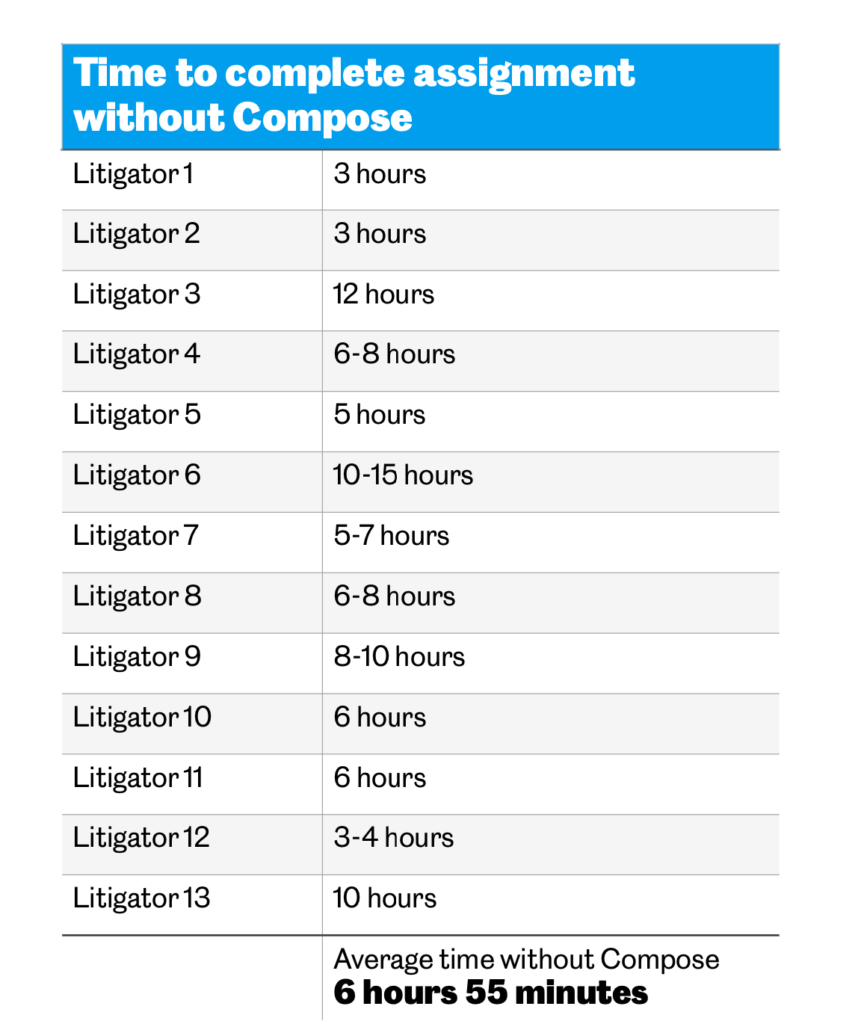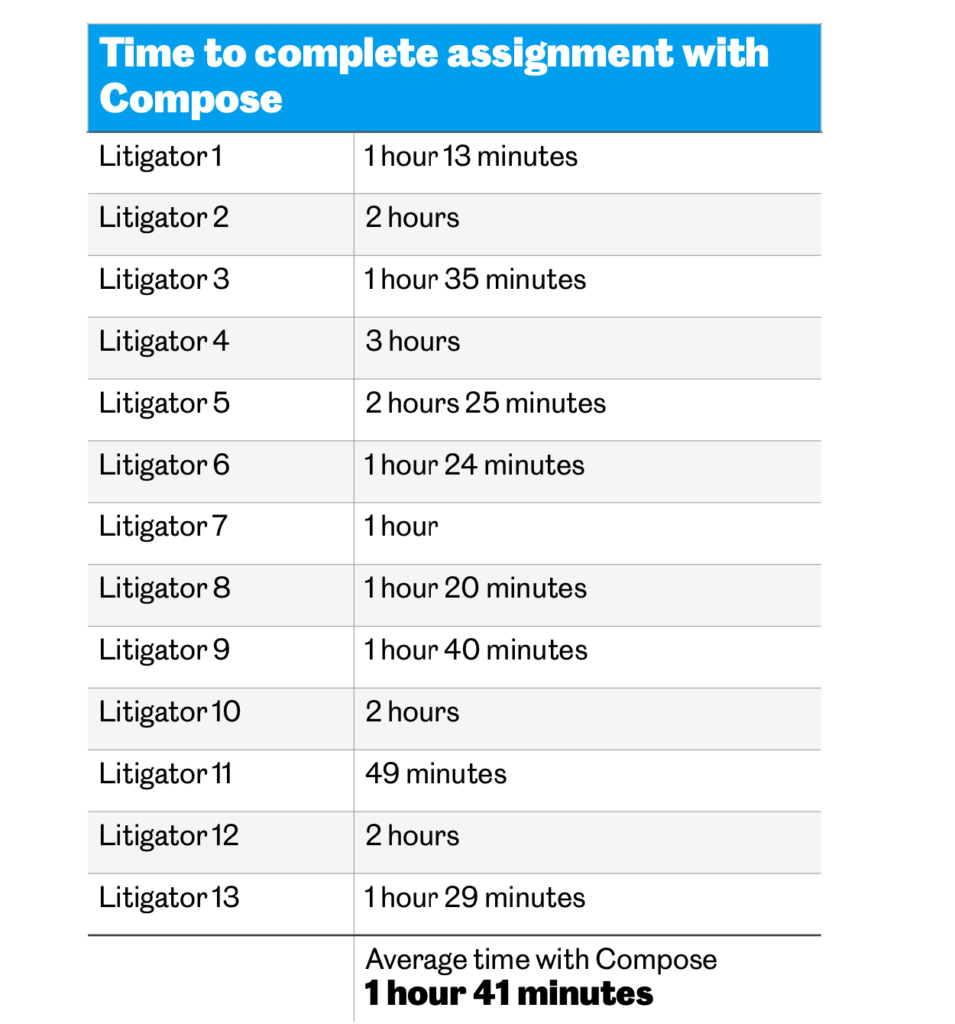
Legal research pioneer Casetext has conducted a comparative study to show the efficiency gains provided by its new Compose brief drafting tool – and the results appear significant.
Now, before we launch into this there is an important caveat: this study was organised by Casetext. That said, the 13 litigators who took part from Big Law firms and in clerking roles for judges had not used the system before, nor did they have any special incentive to do anything other than use the software and tell the company how long the brief drafting test took them.
So, on that basis, here we go.
After a four minute training video on how to use Compose, which was launched earlier this year, (see AL feature about Compose), the test subjects were asked to use the system to draft a ‘Motion to Dismiss for Lack of Personal Jurisdiction‘ based on a complex set of facts. The results were compared to how long they thought the task would take without the additional software. (They didn’t do the same test again without the software as mentioned earlier – that was AL reading too fast.)
As Casetext explains in their report about the results, Compose is intended to eliminate the ‘scavenger hunt’ aspects of brief drafting. It automates the ‘rote, repetitive elements of drafting briefs by providing the lawyer with a large menu of arguments to choose from, including practice notes‘.
I.e. you log in, find the type of brief you want to make and use the relevant content automatically provided by Compose to create the document.
But, did it make any notable difference in real life? This is what Casetext saw:


Jake Heller, CEO and co-founder of Casetext, has long been a public proponent of compare and contrast studies, sometimes even going up against other well-known legal research systems at conferences to prove his company’s capabilities.
Of course, critics may say that tests that you run yourself are not 100% scientific and you can pick scenarios that best suit your software, and that may be true. Even so, the results are there for all to see.
Overall, the study found that using Compose meant:
- 76% faster brief drafting – when based on the estimates of the test subjects on what doing the same task without the software would take,
- 92% of lawyers reported reduced risk of missing an argument or case,
- And on average, the participants saved 5.2 hours per brief drafted with Compose (as above, based on the estimates).
Aside from the stats, the Casetext report raises some important issues around efficiency.
As the report says: ‘In-house legal teams whose outside counsel use Compose can be assured that outside counsel is providing them with exceptional representation, delivered more efficiently and cost-effectively.
‘For law firms, the efficiency gains provided by Compose can improve the firm’s ability to win and retain clients.’
And:
‘This puts attorneys in a position to submit a bill to clients for brief writing that includes only high-value work that is much less likely to be written down or written off.’
This is especially relevant because: ‘In a 2019 survey of over 400 litigators, 84% of them ranked drafting motions as their most time-consuming task.’
And finally:
‘By enabling attorneys to spend 76% less time on a brief with an equal or better outcome, it becomes much more realistic for law firms to consider handling those briefs on a flat-fee basis, and potentially even using the time they save on each brief to take on additional work.’
Putting this all in an economic context really helps to explain why such tech matters. This isn’t just about making the lives of lawyers a bit more convenient, there is a real world cost to not using technology to drive efficiency, and it goes without saying, there are many other companies providing plenty of efficiency gains for the legal sector to consider.
Conclusion
Even if we put the specific numbers aside, the general point is well made: this software helps you to do the same job faster.
Crystallising knowledge and creating an intelligent interface that helps to ferry that knowledge to the user, and which then allows them to cherry pick what’s useful to them to build a document, is an approach that drives efficiency. At least it does if the software has the right spread of knowledge available that needs to be inserted into the document you are making.
In turn, greater efficiency opens up new economic possibilities for both the buyer and seller of legal services, especially in an area that – as shown above – can be a drain on lawyer time under normal circumstances.
Of course, the best way to know if it really does what it says on the side of the tin is to do a demo yourself and find out via your own analysis.
1 Trackback / Pingback
Comments are closed.